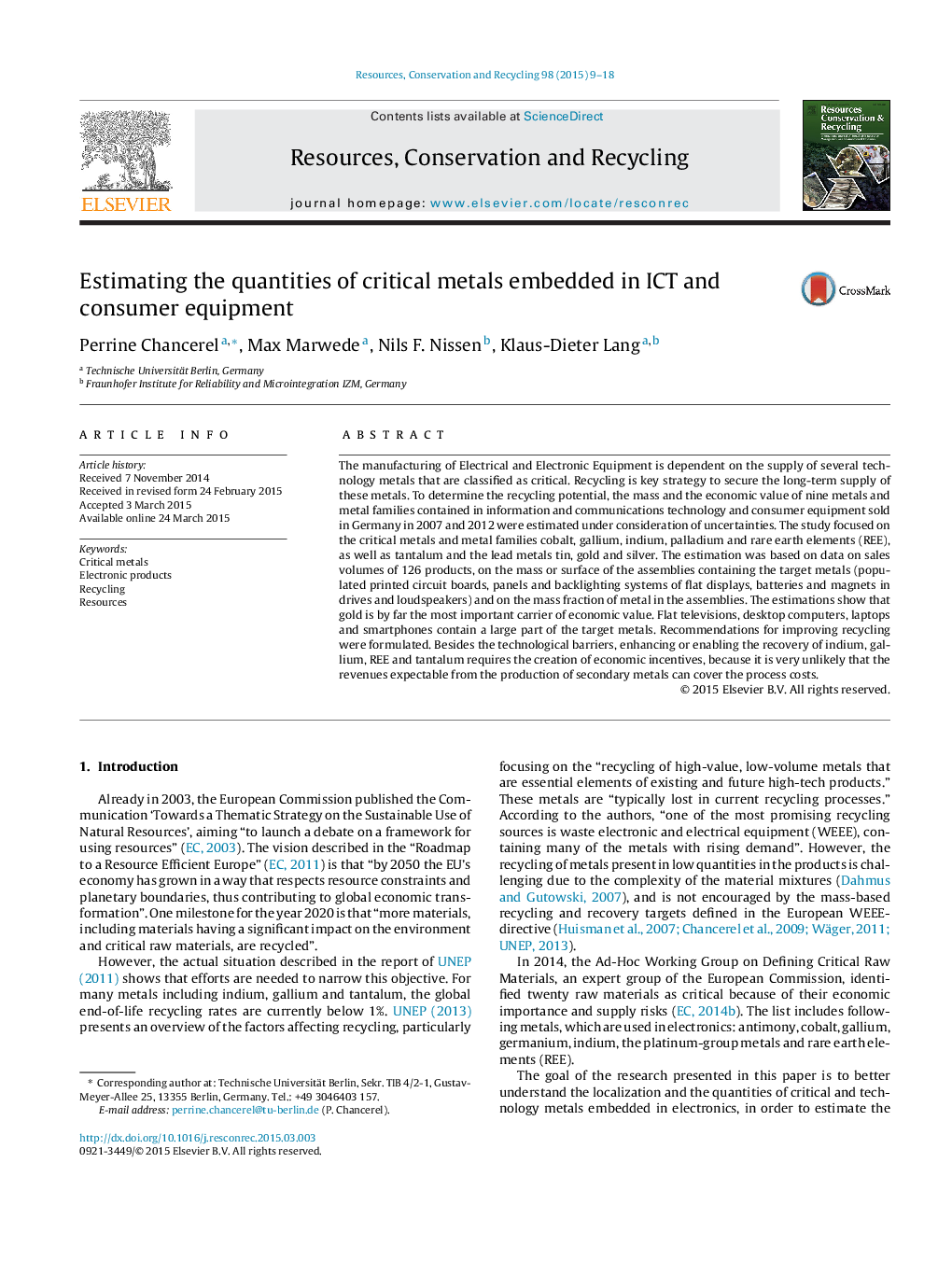| Article ID | Journal | Published Year | Pages | File Type |
|---|---|---|---|---|
| 1062925 | Resources, Conservation and Recycling | 2015 | 10 Pages |
•We estimated the quantities of technology metals embedded in electronic products.•Flat televisions, computers and smartphones are important sources of critical metals.•The main carrier of economic value is, by far, gold.•Product-centered recommendations to improve the metal recovery were formulated.•For several metals, it is unlikely that the value covers the recycling costs.
The manufacturing of Electrical and Electronic Equipment is dependent on the supply of several technology metals that are classified as critical. Recycling is key strategy to secure the long-term supply of these metals. To determine the recycling potential, the mass and the economic value of nine metals and metal families contained in information and communications technology and consumer equipment sold in Germany in 2007 and 2012 were estimated under consideration of uncertainties. The study focused on the critical metals and metal families cobalt, gallium, indium, palladium and rare earth elements (REE), as well as tantalum and the lead metals tin, gold and silver. The estimation was based on data on sales volumes of 126 products, on the mass or surface of the assemblies containing the target metals (populated printed circuit boards, panels and backlighting systems of flat displays, batteries and magnets in drives and loudspeakers) and on the mass fraction of metal in the assemblies. The estimations show that gold is by far the most important carrier of economic value. Flat televisions, desktop computers, laptops and smartphones contain a large part of the target metals. Recommendations for improving recycling were formulated. Besides the technological barriers, enhancing or enabling the recovery of indium, gallium, REE and tantalum requires the creation of economic incentives, because it is very unlikely that the revenues expectable from the production of secondary metals can cover the process costs.
Graphical abstractFigure optionsDownload full-size imageDownload as PowerPoint slide
